What Is the Strongest Animal Bite in the World?
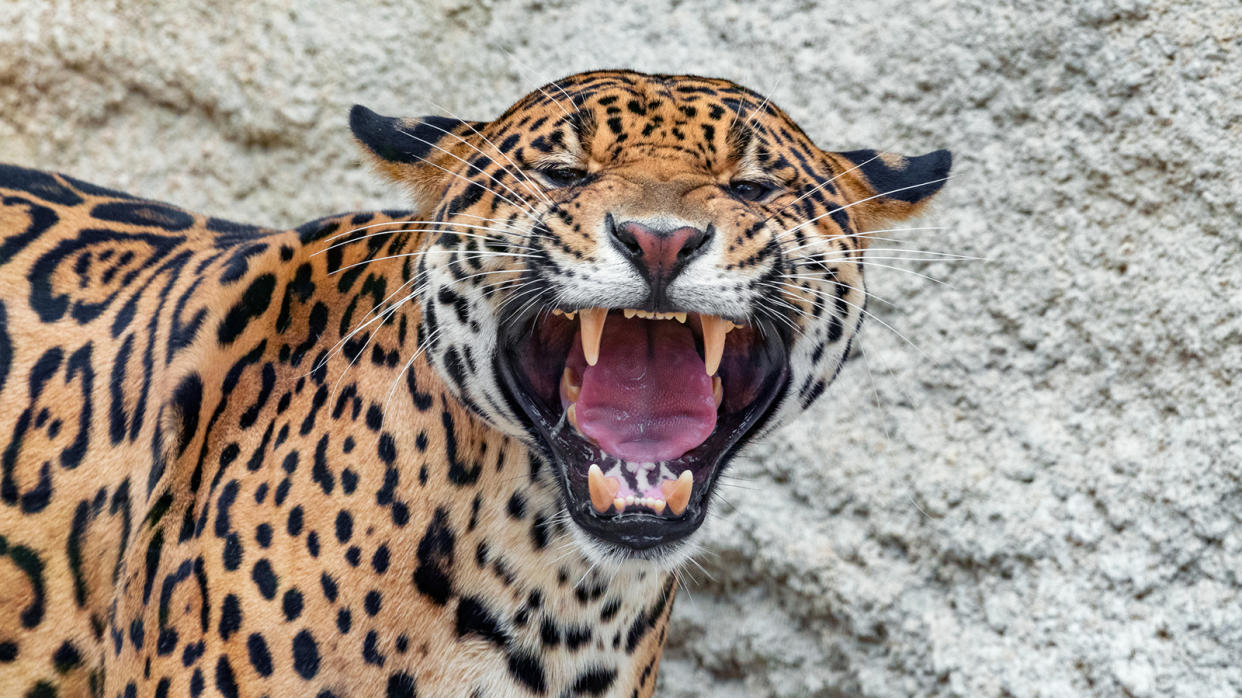
Sharks, crocodiles, lions, tigers, bears, oh my! With all those pointy teeth, what is the strongest animal bite in the world?
It turns out that comparing bite strength is pretty tricky. Bite force is the pressure an animal exerts when it bites down, and the SI unit for bite force is the Newton, or kilogram-meters per second squared.
But you can’t simply ask the world’s toughest predators to bite down on the same instrument, so it’s hard to control for outside variables. Some animals are too rare or dangerous for this type of invasive testing, so scientists have come up with another method: computerized models of an animal’s skull and jaw muscles that estimate its bite force.
But is it fair to compare an estimated bite force to a physical demonstration of a bite? The truth is, most bite force data is simply an estimate, whether it comes from a computer model or from wild animals biting down on a device. And there are many animals for which we have no data at all, like killer whales and polar bears.
Based on available data, here are the animals with the 10 strongest bite forces in the animal kingdom.
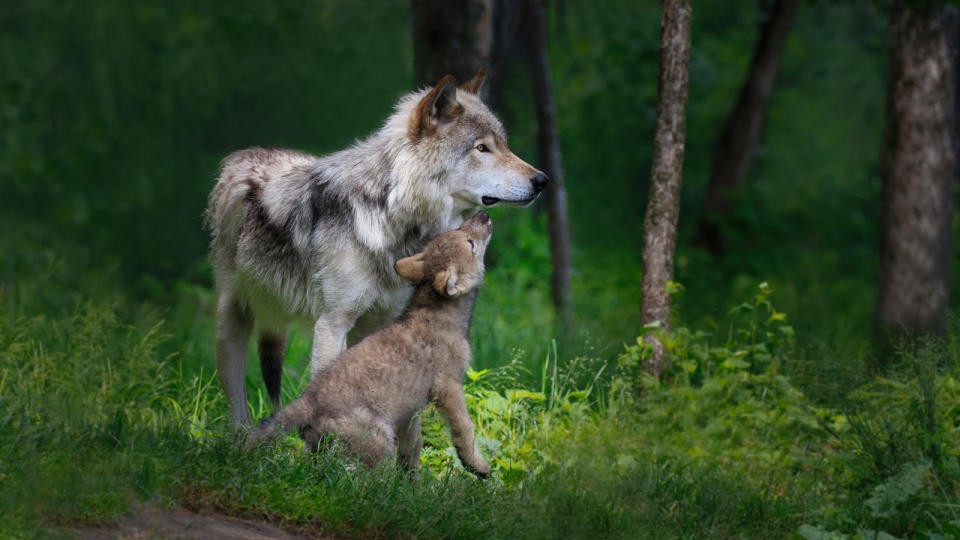
10. Gray Wolf: 593 N
According to a 2005 review of biting mammals, the gray wolf (Canis lupus) has the strongest bite of any canine, at 593 Newtons. For context, a 2014 study found the average human bite force is 149-354 N, depending on age and sex.
Gray wolves live in North America, Eurasia and Africa. A typical adult male is over 6 feet long (1.8 meters) and weighs about 100 pounds (45.4 kg), per Britannica.
Wolves are apex predators; humans are their biggest threat. In the United States, gray wolves are federally protected under the Endangered Species Act of 1973.
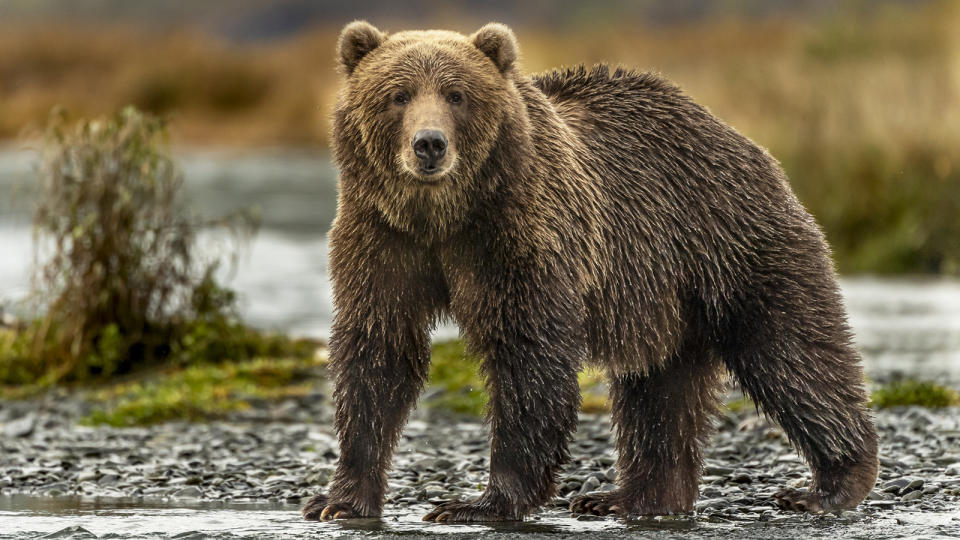
9. Brown Bear: 751 N
Although brown bears (Ursus arctos) primarily eat salmon and berries, they have some pretty huge jaws — and a bite to match. In a 2005 review of mammal bites, the brown bear — which includes the grizzly bear and the giant Kodiak bear — had the highest bite force of any bear at 751 N.
However, the study did not include polar bears (Ursus maritimus), the largest member of the Ursus genus. It’s possible the polar bear has a bite force even stronger than the brown bear’s, but peer-reviewed data is lacking.
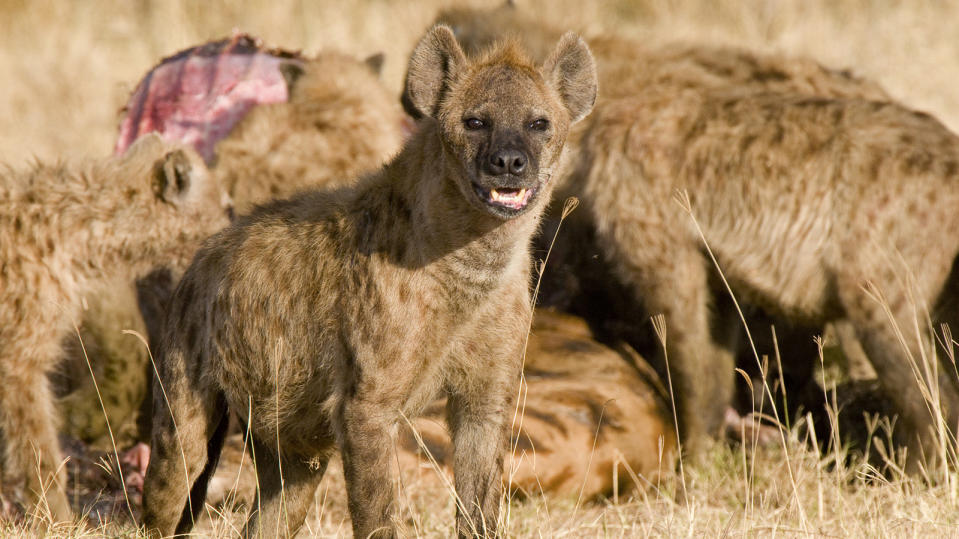
8. Spotted Hyena: 773 N
You might find a hyena’s laugh funny, but you should definitely fear its bite. The spotted hyena (Crocuta crocuta) has a bite force of 773 N — more powerful than a bear, according to this review of mammal bites.
Though hyenas look somewhat like dogs, they’re more closely related to cats. These African mammals compete with lions for their prey, according to the San Diego Zoo.
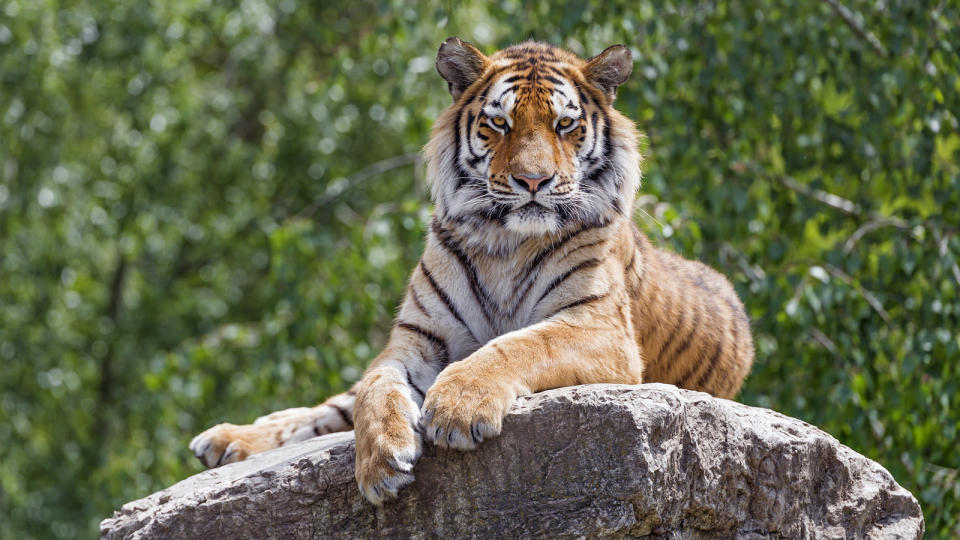
7. Tiger: 1,525 N
With 1,525 N of bite force (per a 2005 review), you don’t want to mess with a tiger (Panthera tigris).
A 2012 study published in The Anatomical Record compared nine species of big cats to find that, while the tiger had the strongest bite force, the jaguar (Panthera onca) had the biggest bite for its size. One of the study’s authors, Adam Hartstone-Rose, told BBC Wildlife: “If you had to choose, you’d want to be bitten by a jaguar, not a lion or a tiger. But pound for pound, jaguars pack a stronger punch.”
Hartstone-Rose explained that “the strength of the jaguar’s bite is due to the arrangement of its jaw muscles, which, relative to weight, are slightly stronger than those of other cats. In addition — also relative to weight — its jaws are slightly shorter, which increases the leverage for biting.”
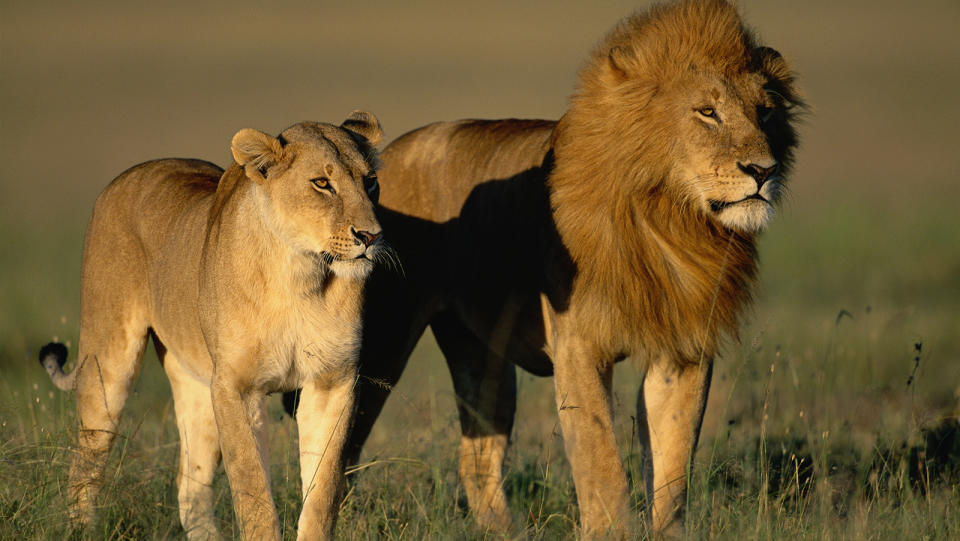
6. Lion: 1,768 N
Although the lion (Panthera leo) is slightly smaller than the tiger, it has a stronger bite (1768 N), according to a 2005 review. The lion’s powerful jaws help it take down animals as large as buffalos, elephants and hippopotamuses, although the lion’s preferred diet consists of antelopes, wildebeests, and zebras.
To take down its prey, a lion will lunge at the neck and use the force of its bite to strangle the animal, according to Britannica.
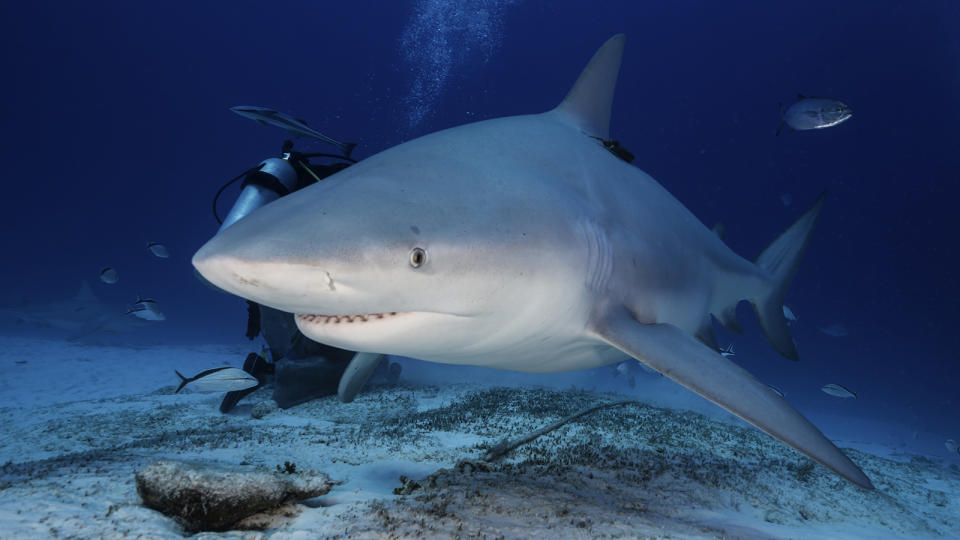
5. Bull Shark: 5,914 N
The bull shark (Carcharhinus leucas) is one of just two shark species that can survive in both freshwater and saltwater. Bull sharks are known for their aggressive nature and interesting hunting style: They bump their prey with their blunt snouts before subjecting it to its powerful bite — up to 5,914 N of force at the posterior bite point, according to a 2012 study published in Zoology.
But how does its bite compare to that of other sharks? “An 18-foot-long great white will still have a more powerful bite than an 11-foot bull shark, just by virtue of its size,” one of the study’s authors, Dr. Philip J. Motta, told USA Today. “But pound-for-pound, a bull shark of the same size would have a stronger bite.”
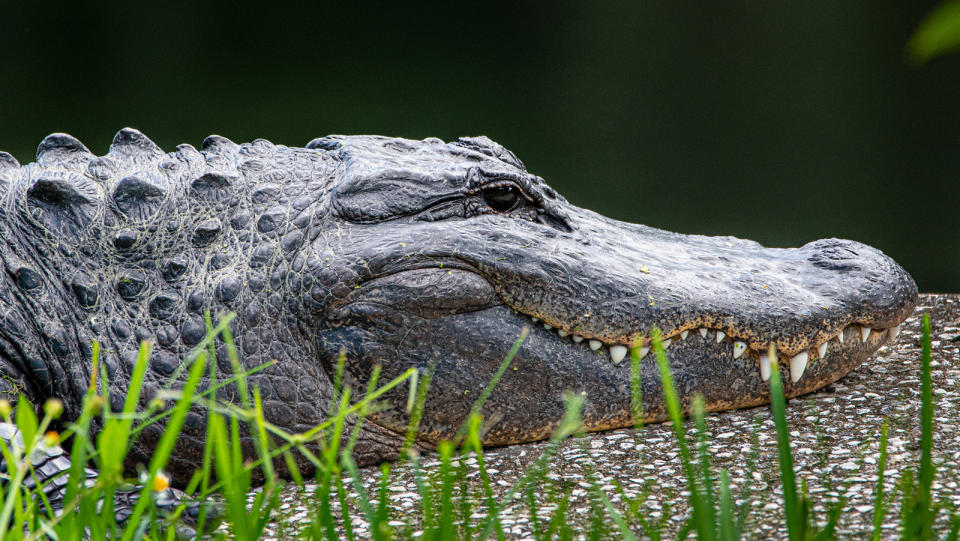
4. American Alligator: 9,452 N
When it comes to measuring the bite force of large animals, some of the best data we have comes from crocodilians. While a lot of data on sharks and big cats is theoretical, a 2012 study published in the journal PLoS One actually had live reptiles bite down on a special instrument to measure their bite force.
The American alligator (Alligator mississippiensis) had one of the strongest bites at 9,452 N — strong enough to crack a turtle shell. American alligators have the ability to replace their teeth when they get worn down, and a single alligator can go through 3,000 teeth in its lifetime, according to the Smithsonian’s National Zoo & Conservation Biology Institute.
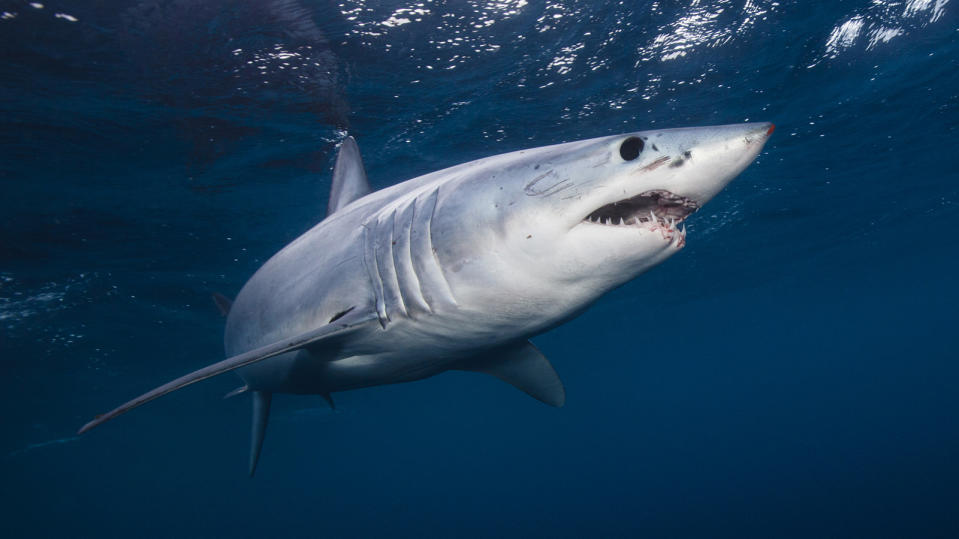
3. Mako Shark: 13,000 N
The shortfin mako shark (Isurus oxyrinchus) is the largest shark to have had its bite physically measured. In a 2020 episode of the show “Mako Nation,” marine biologist Dr. Riley Elliott recorded the mako shark’s bite using a custom device off the coast of New Zealand. The animal’s strongest bite registered 13,000 N.
“[It’s] obviously an incredible number to discover, but I think it really reflects the fact that we know so little about the mako shark,” Dr. Elliott told Newsweek. These members of the mackerel shark family can reach almost 15 feet (4.8 meters) in length and weigh more than 1,100 pounds (499 kg).
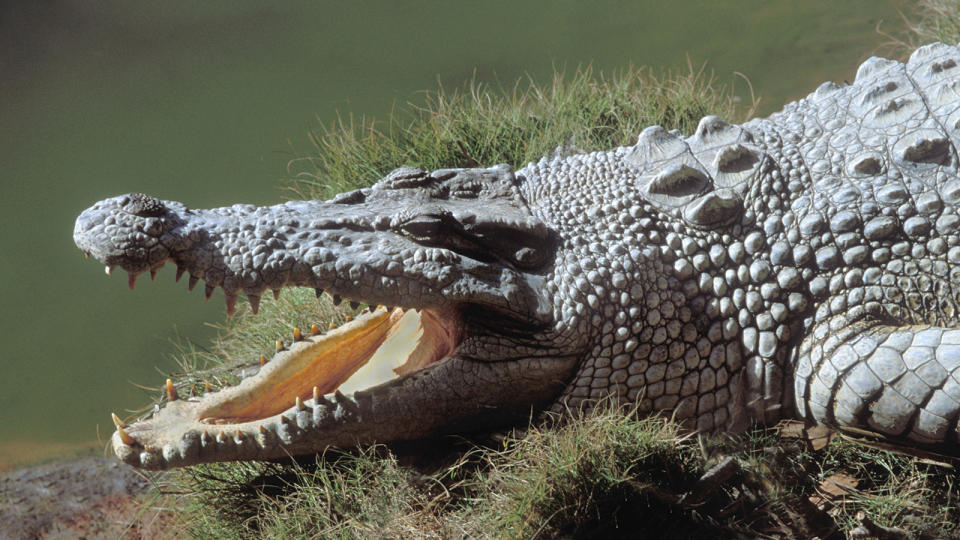
2. Saltwater Crocodile: 16,414 N
The saltwater crocodile (Crocodylus porosus) has the strongest physically measured bite force at 16,414 N. This powerful bite came from one 3,689-pound (1,763.3-kg) individual as part of a 2012 study that measured the bite force of 83 adult specimens from all 23 recognized crocodilian species.
The saltwater crocodile is the largest living reptile species, and, according to the study’s authors, “bite forces strongly correlate with body size,” so its powerful bite force isn’t surprising. This particular species actually tops the list of largest crocodiles in the world.
Saltwater crocodiles are opportunistic hunters and will eat whatever they can get their jaws on, from small insects to huge water buffalo.
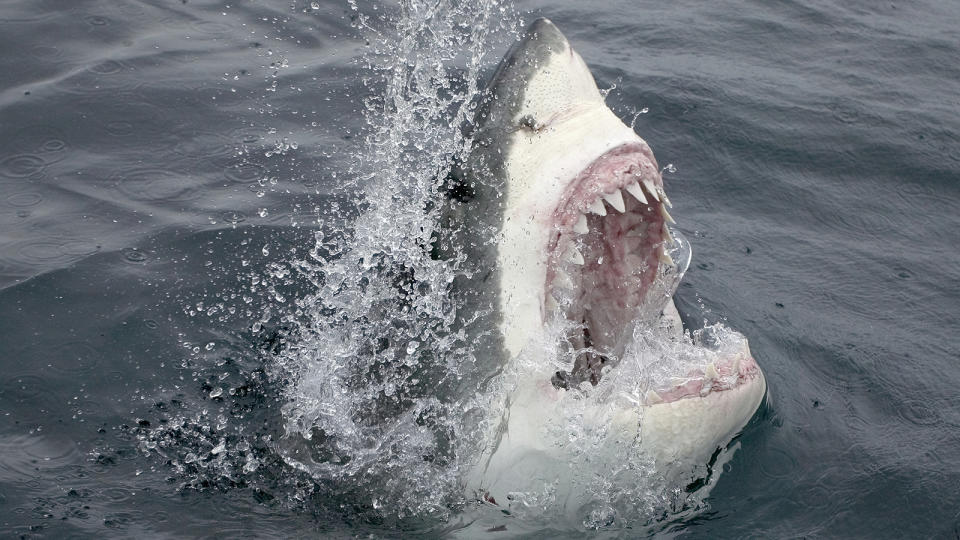
1. Great White Shark: 18,216 N
Weighing up to 5,000 pounds (2,268 kg), the great white shark (Carcharodon carcharias) is the world’s largest predatory fish, regularly dining on marine mammals like seals and sea lions. So it shouldn’t come as a big surprise that the shark bite is the strongest known animal bite.
But it wasn’t exactly easy to measure the strength of a great white’s bite.
In a 2008 study published in the Journal of Zoology, researchers “digitally reconstructed” the great white’s jaws to estimate how hard the shark could bite. It turns out, pretty hard. The researchers estimated the great white shark’s maximum bite force to be 18,216 N, but that number could be on the lower end.
The study notes that “some observed behaviors, such as lateral shaking, might incorporate significant postcranially generated forces.” If you’ve ever played tug with a dog, you’ve seen firsthand the effects of shaking prey.
Despite the intensity of the great white’s bite, the researchers wrote that 18,216 N “appears unremarkable when the predator’s body mass is considered.” One of the study’s authors, Dr. Stephen Wroe, explained: “Pound for pound the great white’s bite is not particularly impressive, but the sheer size of the animal means that in absolute terms it tops the scales.”
Original article: What Is the Strongest Animal Bite in the World?
Copyright © 2023 HowStuffWorks, a division of InfoSpace Holdings, LLC, a System1 Company


